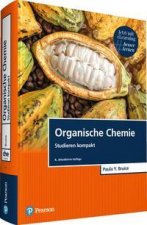
Code: 36529483
Design of Electronic Devices Using Redox-Active Organic Molecules and Their Porous Coordination Networks
This book addresses the development of electronic devices using redox-active organic molecules and their porous coordination networks (PCNs), and highlights the importance of the molecular arrangement. Redox-active organic molec ... more
- Language:
 English
English - Binding: Hardback
- Number of pages: 92
Publisher: Springer Verlag, Singapore, 2021
- More about this

221.95 €

Low in stock at our supplier
Shipping in 10 - 15 days
Potřebujete více kusů?Máte-li zájem o více kusů, prověřte, prosím, nejprve dostupnost titulu na naši zákaznické podpoře.
Add to wishlist
You might also like
-

Organic Redox Systems - Synthesis, Properties, and Applications
225.12 € -

English Tea Shop Čaj Darjeeling, sypaný, 80g
9.40 € -5 % -

Auxiliar Administrativo del SERMAS. Más de 1.000 preguntas de examen tipo test.
40.90 € -

El fantasma de Canterville y otros cuentos
8.38 € -1 % -

Lecciones del Sistema Fiscal Español
24.03 € -4 % -

Ingliz Va O`zbek Adabiyotida Urush Voqealari Inson Taqdiriga Ta'siri
41.11 € -

Elige Tu Trabajo En 5 dias
14.72 € -2 %
Give this book as a present today
- Order book and choose Gift Order.
- We will send you book gift voucher at once. You can give it out to anyone.
- Book will be send to donee, nothing more to care about.
More about Design of Electronic Devices Using Redox-Active Organic Molecules and Their Porous Coordination Networks
You get 549 loyalty points
 Book synopsis
Book synopsis
This book addresses the development of electronic devices using redox-active organic molecules and their porous coordination networks (PCNs), and highlights the importance of the molecular arrangement. Redox-active organic molecules hold considerable promise as flexible electronic elements, because their electronic state can easily be controlled using external energy. Although various kinds of redox-active organic molecules have been synthesized, attempts to apply them to electronic devices have been limited, owing to the lack of proper structural design. Moreover, ligand-based redox-active PCNs remain largely unexplored because of the limited availability of redox-active ligands. In addition to developing new redox-active organic molecules, in order to design electronic devices based on these molecules/PCNs, it is essential to understand the connections between their molecular arrangement, electrical properties, and redox activity. In this thesis, the redox-active organic molecule 2,5,8-tri(4-pyridyl)1,3-diazaphenalene (TPDAP), which features a large pi plane and multi-intermolecular interactivity, is used to develop a resistive switching memory device. In addition, its PCNs are synthesized to fabricate chemiresistive sensors, and the electrical properties are modulated using post-synthetic modification. Each mechanism is systematically investigated by means of structural determination and well-defined control experiments. Subsequently, the book proposes general guidelines for designing electronic devices using redox-active organic molecules. The book will appeal to a broad range of readers, from basic scientists to materials engineers, as well as general, non-expert readers.
 Book details
Book details
Book category Books in German Naturwissenschaften, Medizin, Informatik, Technik Chemie Physikalische Chemie
221.95 €
- Full title: Design of Electronic Devices Using Redox-Active Organic Molecules and Their Porous Coordination Networks
- Language:
 English
English - Binding: Hardback
- Number of pages: 92
- EAN: 9789811639067
- ISBN: 981163906X
- ID: 36529483
- Publisher: Springer Verlag, Singapore
- Weight: 313 g
- Dimensions: 241 × 160 × 11 mm
- Date of publishing: 24. August 2021
Trending among others
-

Organic Chemistry, Global Edition
79.77 € -

Schaum's Outline of Organic Chemistry, Sixth Edition
25.25 € -19 % -

Intumescent Coatings for Fire Protection of Building Structures and Materials
199.85 € -

Aminosäuren und ihre Aufgaben im menschlichen Organismus
38.35 € -1 % -

Art of Writing Reasonable Organic Reaction Mechanisms
62.28 € -

Pharmaceutical Organic Chemistry
104.83 € -12 % -

Reaktionsmechanismen
70.97 € -4 % -

Organic Name Reactions
83.25 € -12 % -

Introduction to Stereochemistry
32.62 € -

Anti-HIV-Mittel
34.77 € -9 % -

Chemistry and Technology of Natural and Synthetic Dyes and Pigments
175.30 € -2 % -

FLUORESCEIN CHEMISTRY
42.34 € -9 % -

Agenti anti-HIV
34.77 € -9 % -

Organische Chemie
113.12 € -4 % -

Organic Chemistry: The Basics
142.47 € -6 % -

Acetic Acid and Vinegar, Ammonia, and Alum
22.90 € -

Organische Chemie
106.47 € -

Chemistry and Biochemistry of Food
89.49 € -19 % -

Enantioselective Vinylogous Michael via Organocatalysis
34.05 € -

Halogen-Free Flame-Retardant Polymers
102.99 € -2 % -

Organic Chemistry: Advanced Principles and Applications
134.19 € -6 % -

Organic Chemistry: Structure, Mechanism and Synthesis
146.05 € -6 % -

Systematische Nomenklatur Der Organischen Chemie
45.81 € -

Ceolit Mezomorfnyj material
33.13 € -

ACETATE CELLULOSE TECHNOLOGY
64.84 € -

INULIN I EGO PROIZVODNYE:
62.28 € -9 % -

Multifunctional Polymeric Foams
169.68 € -

ANTIOXIDANT ACTIVITY OF BETEL LEAVES EXTRACT
42.34 € -9 % -

Sulfuric Acid for Control of Weeds; B596
15.74 € -

Beilsteins Handbuch Der Organischen Chemie
54.51 € -

Bioactive Compounds
175.30 € -2 % -

Synthese von Tetrahydropyran/ Tetrahydrofuran - Derivaten
48.06 € -9 % -

Chimie organique
104.73 € -

Agents anti-VIH
34.77 € -9 % -

Prodotti agrochimici
34.77 € -9 % -

Effect of gibberellic acid
42.34 € -9 % -

Spektroskopie - Bafög-Ausgabe
53.79 € -

Organic Reactions Volume 112, Parts A and B
893.95 € -

Organic Chemistry Laboratory Experiments I
58.50 € -9 % -

Organic Chemistry Problems and Solutions
37.12 € -

Hydrogels
152.09 € -1 % -

Sterling Test Prep College Organic Chemistry Practice Questions
57.68 € -

Essential Oils
152.09 € -1 % -

Click Chemistry
42.34 € -9 % -

Heterocyclic Corrosion Inhibitors
49.50 € -

Organische Chemie
104.73 € -

Grundlagen der Organischen Chemie
76.70 € -18 % -

Esperimenti di laboratorio di chimica organica I
58.50 € -9 % -

Failure Mechanisms and Fracture Energy of Hybrid Materials
33.13 €
Collection points Bratislava a 2642 dalších
Copyright ©2008-24 najlacnejsie-knihy.sk All rights reservedPrivacyCookies


 15549 collection points
15549 collection points Delivery 2.99 €
Delivery 2.99 € 02/210 210 99 (8-15.30h)
02/210 210 99 (8-15.30h)